I am worried these days because of the excessive hair fall daily even if I don't comb my hair. It has been a long time I don't comb my hair because I am scared to see the several strands on the comb. When I wake up in the morning, I see lots of them in my bed sheet and pillow. Whenever I am, the hair fall appears on the floor. Whatever I do, I can feel the hair fall in my shoulders and elbows. I don't wanna be bald, but I am positive I don't have alopecia because none of my lineage who have this kind of condition. I remember the death of my grandmother caused by thyroid. She had a goiter long time ago that wasn't treated. My cousin has a simple goiter currently but she is undergoing immediate treatment.
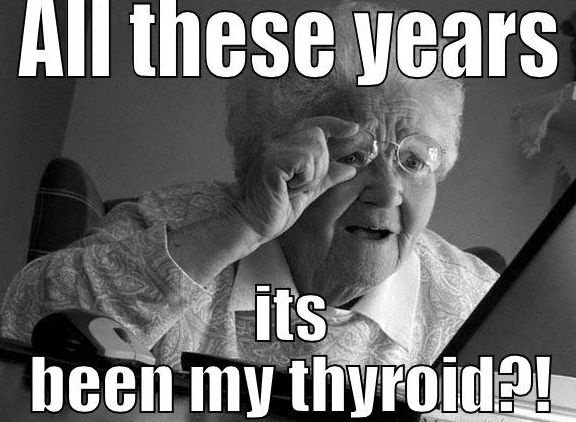
Source of Image
So, what is thyroid? What are the symptoms and the causes?
The thyroid gland is an H-shaped gland consisting of one lobe in each side of the trachea with a piece of tissue connecting the two lobes. In the adult, thyroid glands weigh approximately 25-30 g.
The hormones of the thyroid gland regulate the metabolism of the body. They also affect growth and development.
The thyroid is filled with many small follicles that contain colloid, which contains the thyroid gland's stored hormones. Actually, the thyroid is the only endocrine gland in the body that is capable of storing appreciable amounts of hormones.

Older, indirect methods for evaluating the activity such as basal metabolic rate (BMR), protein-bound iodine (PBI), and butanol-extractable iodine (BEI) have been replaced by radioimmunoassay methods that are direct and more reliable. (Source of Image)
The C-cells (figure above) in the thyroid gland produces the hormone calcitonin (thyrocalcitonin), which, along with the parathyroid hormone, regulates the calcium ions in the blood. It has been shown that the parathyroid hormone sustains the blood supply of the calcium ions whereas calcitonin prevents the blood calcium ion concentration from rising above the required level.
Pure calcitonin (figure above) was first isolated in 1968, and its structure was determined shortly, therefore. This hormone is a polypeptide containing a single chain of 32 amino acids. Calcitonin has now been synthesized in the laboratory, and its mode of action in the body has been investigated. It produces its effect by inhibiting the release of calcium ions, from the bone to the blood. The release of calcitonin is stimulated by high levels of calcium in the blood.
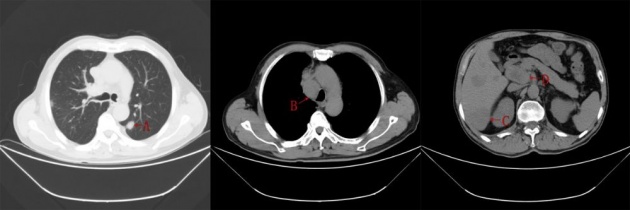
Figure. Advanced medullary thyroid carcinoma after 8 weeks of treatment with apatinib.
-Read more on this source of qoute and figure above used-
Medullary thyroid carcinoma, a disorder of the C cells of the thyroid, causes an abnormally high production of calcitonin.
Hypothyroidism
Hypothyroidism (figure above) is a condition in which the thyroid gland does not manufacture sufficient thyroxine for the body's needs. It is usually caused by a lack of iodine in the diet, particularly in parts of the country where the water and foods contain little iodine. Hypothyroidism may also be due to a disease of the thyroid gland or to its congenital absence.
The symptoms of hypothyroidism are sluggishness, weight gain, slower heartbeat, reduced metabolic rate, hair loss, and loss of appetite. Hypothyroidism can be remedied by the used of iodized salt as a part of the normal diet or by the use of synthetic thyroid hormones.
Courtesy of the video: Marnie Goldberg via Youtube
Cretinism

Source of Image
If the thyroid gland is absent or fails to develop in an infant, the effects produced are called cretinism and the individual is called cretin. The figure above shows the difference of an untreated patient with cretinism (left) and treated (right). Cretins have greatly retarded growth, both physically and mentally. They are usually abnormal dwarves with coarse hair and thick dry skin and are obese with protruding abdomens. They also underdeveloped mentally and sexually.
A cretin may also develop normally if given thyroid hormones before he/she reaches adulthood.
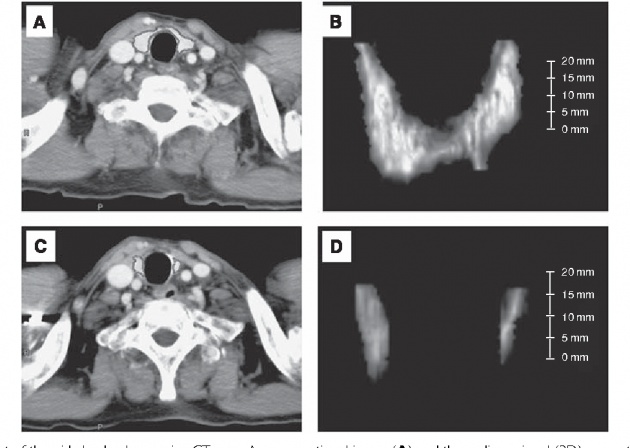
Figure above from A-D appears the different volume of gland tissue. Thyroid gland atrophy is the case. (Source of Image)
If the thyroid gland reaches atrophy after reaches adulthood, the same symptoms are in cretinism appear except that the individual remains adult in size. One very noticeable symptoms are in the development of thick, coarse, and dry skin. Such a condition is known as myxedema. Persons who have myxedema are also sluggish, have a lower pulse and metabolic rate and lower body temperature and are also frequently anemic. They are also very sensitive to cold.
Myxedema can also be cured by the administration of thyroxine.
Simple Goiter
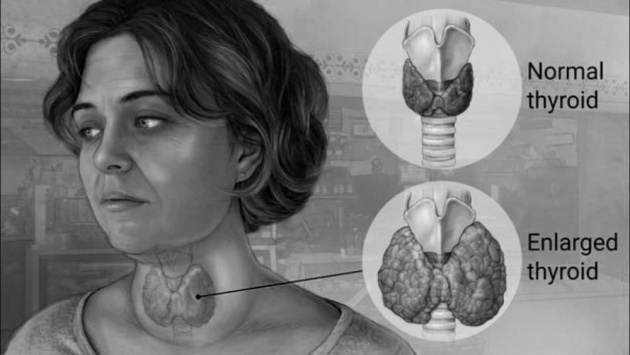
Source of Image
Simple goiter (figure above) also called colloid goiter or endemic goiter is a condition in which a thyroid gland enlarges, usually because of lack of iodine in the diet. The decreased productions of thyroid hormones cause increased production of TSH (thyroid stimulating hormone), which in turn overstimulate the thyroid gland. A simple goiter is accompanied by a definite increase in the amount of colloid material in the thyroid gland and also the increase of the size of the neck itself.

The patient successfully recovered from surgery, removed the giant tumor in the thyroid gland. (Source of Image)
Goiters occur in areas where there is a deficiency of iodine in the food and drinking water. The condition can be successfully prevented or cured by the addition of iodine compounds (usually iodized salts) to the diet.
World War I Caused Goiter
In the U.S. in the early 20th century, goiter was especially prevalent in the region around the Great Lakes and the Pacific Northwest. Goiter began receiving serious attention as a result of the World War I draft pointing to the problem in Northern Michigan and Wisconsin. At this time, many men were disqualified from military service as a result of the public health problem.
-Read more here-
Hashimoto's Disease
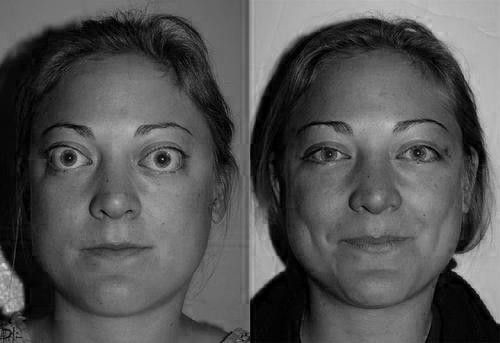
In the figure above, the left side is an untreated Hashimoto.The right side is after the treatment.(Source of Image)
Hashimoto disease is a type of condition in which all of the aspects of thyroid function may be impaired. The disease is caused by the attack of the thyroid gland by the body's own immune system.
Hyperthyroidism

The figure of the patient before (left) and after (right) the treatment of hyperthyroidism. (Source of Image)
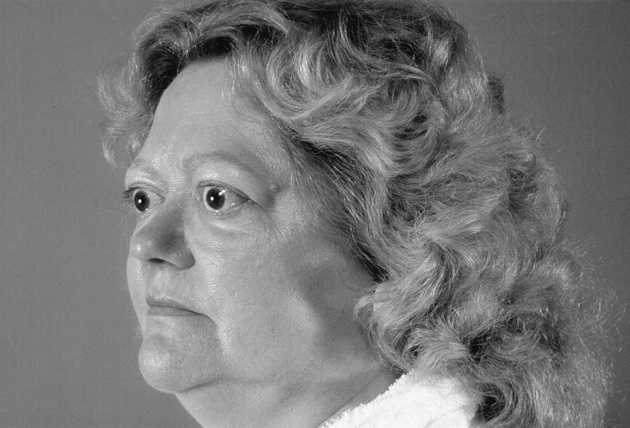
Hyperthyroidism occurs when the thyroid gland produces excess thyroxine. The symptoms are an increased metabolic rate, bulging of the eyes (exophthalmos), nervousness, loss of weight, a rapid, irregular heartbeat, and elevated body temperature. Such a condition is also called Grave's disease, Basedow's disease, or exophthalmic goiter. (Source of Image)
Hypothyroidism may also be due to the tumor of the thyroid gland (toxic adenoma or Plummer's disease).
Hyperthyroidism can be controlled or cured by surgical removal of part of the thyroid gland, by the oral administration of radioactive iodine, or by the use of antithyroid drugs. Hypertrophy of the endocrine gland can lead to toxic adenomas with a malignant potential if not treated promptly.
Radioactive iodine, used in the treatment of hyperthyroidism, is usually administered in the form of sodium iodide, Nal. The body converts into inorganic radioactive iodide into thyroglobulin in the thyroid gland, thus subjecting that gland to radiation that will cut down its activity.
Conclusion:
Courtesy of the video: Homemade Solutions via Youtube
Prevention is better than cure. If the symptoms persist, please visit a nearby physician immediately.
Sources:
- https://www.womenshealth.gov/a-z-topics/thyroid-disease
- https://instruction.cvhs.okstate.edu/Histology/HistologyReference/hrendo.htm
*************************************
All rights reserved 2019. No part
of this article may be reproduced without
a special credit in writing from the
publishers of Women's Health and Okstate.edu.



